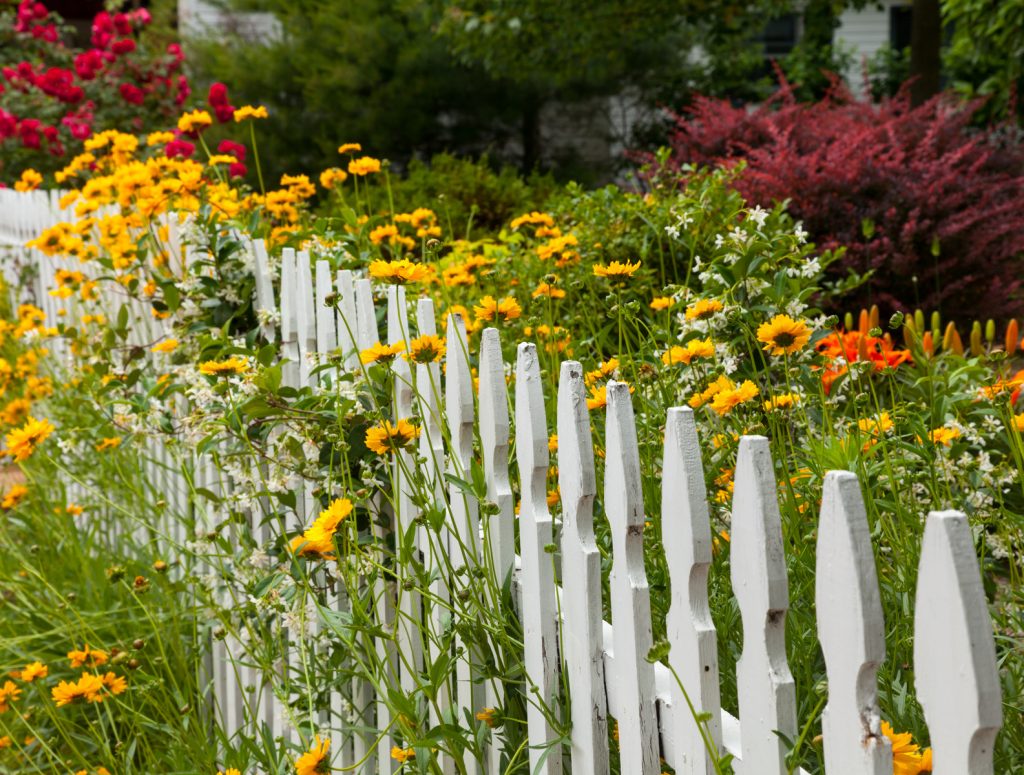
“Fear is the highest fence.” – Dudley Nichols
Mending one’s fences – to strengthen or reestablish one’s position by conciliation or negotiation.
Being on the fence – uncommitted, neutral, and undecided.
Walls create physical and mental barriers. Putting up fences and rushing to repair them at the last minute is exhausting. When part of a fence is broken, scratched or needs new paint, it’s time to take action. For the purpose of this article, our body mind and spirit is the ‘yard’ we put fences around. This protects us from possible ‘outsiders’ or unwanted visitors. Granted, we need strong fences that provide safely, security and supports our needs, but not those that holds us hostage. What kind of fences have you built and do you have some mending to do? Our ‘yards’ need to be nourished and nurtured. Therefore, think of fence mending as a requirement for a happy healthy you.
Easy access, not top priority to keep others out, the gate is open and inviting. People happily show up to share creative ideas, co-create and spend time enjoying the surroundings. There is an ongoing desire to contribute to the process of nurturing and supporting such a lovely environment.
Picket Fences
Picket fences are a cliche but they are adorable, welcoming and hospitable. Yards that are lovingly cared for have some things in common. They are consistently being worked on, weeds are pulled when needed, new seeds are planted, watered, and nurtured. Needless to say, all this is in support of growth that will manifest a healthy harvest.
Concrete Fences
Concrete fences and barriers keep people out and are built with a healthy dose of fear. These perceived barriers give the illusion of safely. Few want to cross this concrete barrier. The yard becomes bare and lonely, filled with weeds and overrun with debris. The question becomes, what is meant to be walled in, or walled out?
Barbed Wire and Electric Fences – Ouch!
Needing a barrier for enclosure shows defensiveness and anger. Yelling across the fence is common, as are threats. Witty repartee and skillful arguments that do not sit well keeps the sword handy and ready for battle. Barbed wire and electric fences are the ultimate dividers, meant to separate, alienate and cause barriers to communication and negotiation. As a result, there is not much fence mending gong on.
7 Ways to Mend Your Fences – Consider This a Healing Process
- Dig below the fence and find the root cause of the problem.
- Communicate your feelings and be open to listening to the other persons perspective. You can agree to disagree – it’s okay!
- Remember what is important about your relationship.
- Forgiveness – Let old grudges go the way of the dodo bird. Apologize or accept and apology.
- Restore trust – this happens by mending fences and building bridges.
- If your fence is broken, find a way to repair it. There are resources everywhere.
- Rebuilding takes time, be patient!
Our natural world does not want or need barriers. Concrete, barbed wire and electric fences are a sad reflection on where we are as a society. Man-made barriers have been created to keep us separate – battling over who is right and who is wrong. Whose fence is stronger, higher, the wrong color, size or made of a foreign material we don’t like. These barriers destroy family, friendship, businesses. Much as I would like to go on, you get my drift. Change begins with each of us, working together for the common good.
Observe next time you see a neighbor repairing a damaged fence. The new section is repaired and painted to look new, or to match the existing fence. Wouldn’t it be fantastic is life could be fixed as easily? Build a bridge that leads to peace. Assess the slights, hurts or damage and take the appropriate repair steps. All fences get scuffed up over a lifetime. Therefore, it’s up to us to do repairs that suit our sensibilities.
In Conclusion: Another perspective via Seth Godin’s Blog – The Invisible Fence
There are very few fences that can stop a determined person (or dog, for that matter).
Most of the time, the fence is merely a visual reminder that we’re rewarded for complying.
If you care enough, ignore the fence. It’s mostly in your head.

Very clever article with vivid metaphors!! Love it! ??????????????
Thanks Deb Scott – I enjoyed writing it!
Great analogies with the various types of fence, excellent piece!
Don’t fence me in! Thanks Sherry for your comment. 🙂
What a great article! Thank you!!!
What an interesting and creative interpretation! Thank you!!!
Thanks Tarah, I had fun writing it! 🙂
Debra, I love your creative take on fences. I think of fences as emotional boundaries, the best boundaries are flexible. As you said, fences are good when they provide a sense of security to support our needs but not when we become trapped by them. Thank you for your thought provoking post. xx
TYSM Lisa for your thoughtful comment. Fences can invite us in or lock us out, but no need to become trapped by them! As the old saying goes – don’t fence me in! xx
Great article, it really make me think of some fences I could mend.Your newsletters give us so many moments to reflect.
I am happy you enjoy my monthly Living in Courage Newsletter!
We need to remember that not only does every fence need a gate, but that it swings both ways. Great post.
Thanks for the visual Barb!
Boundary work is constant – great metaphors!
Good post.
Thanks so much Robin!
Debra this is brilliant, just love the metaphors. Your healing process is a wonderful path for people to move out of fear into joy too . Love your creative mind xxxx
Wow Suzie, thank you for this glowing review! xxx
Love the way you use fences as a metaphor for our own inner barriers, Debra. Fences are needed for sure, but not the ones that promote unnecessary fear and distrust.
We agree Lea, fences built of fear and distrust are not for us!
Empowering! Thank you…
Thank you Linda!
Thank you for stopping by Linda! 🙂